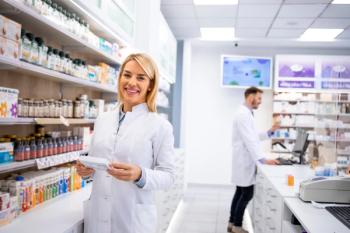
Video: Bringing Health Care Closer to Home
What can pharmacists do to bring innovative care models into their stores to serve their communities?
Drug Topics sat down with Julie Akers, PharmD, FWSPA, at the 2023 National Association of Chain Drug Stores Total Store Expo (NACDS TSE)—held August 12 to 14 in San Diego, California—to discuss ways that pharmacists can maximize the work they put in to developing innovative care models in their communities.
Akers, the Associate Dean of External Relations and an Associate Professor at Washington State University College of Pharmacy and Pharmaceutical Sciences, was a panelist at the session “Bringing Healthcare Closer to Home: Innovative Pharmacy Care Models to Better Serve Communities.”
Drug Topics: What are some ways that pharmacies can make health care more accessible and convenient to community members?
Julie Akers, PharmD, FWSPA: I think the important part of community pharmacists being accessible is, they need to have sustainable business models. We're seeing more and more pharmacies close—especially independents in rural areas—but also independents in urban areas, as well as large chains, [due to] consolidation and closures.
Pharmacists do so much more than provision of medications. There's a misconception [among] the public, because all they see is that a pharmacist provides the medications, [but] it doesn't take a doctorate-level degree to take things from a big bottle and put it into a smaller bottle. The degree is really understanding pathophysiology and chronic disease state management and how to coach patients to live healthier lives.
I think the important thing that those pharmacists can do is really provide clinical services in their communities, and really find those gaps in care in their community, and partner with a local critical access hospital or a large health system that's having issues with 30-day rehab beds; what conditions are they? Is there something that those pharmacists can do if those patients are referred to them, where they can provide that care for that person?
Drug Topics: What are your recommendations for pharmacists who are looking to expand the services that they offer to their communities?
Akers: I think the first step, if you're going to look at expanding services, is to do a needs assessment. The last thing we want is for a pharmacist to start doing services that then aren't utilized in their community. There's a lot of resources that go into that, and it can be really disheartening if you start a service and it's not utilized. We also don't want services to start that are viewed as competitive within their community with other providers.
So, I say start out with a needs assessment: Reach out to your local health systems or [the] primary care provider clinics in your area. Find out where they're struggling, find out which disease states they're getting negatively impacted on value-based payment models, and then propose to them solutions. What can you do to help those patients? Maybe it's chronic disease state management, helping those patients with diabetes get to their HbA1c goal, or helping that patient with hypertension get to their blood pressure goals. That's going to be a win-win. I think the key is, again, that needs assessment, and then building partnerships in your community so it's seen as collaborative and not competitive.
Newsletter
Pharmacy practice is always changing. Stay ahead of the curve with the Drug Topics newsletter and get the latest drug information, industry trends, and patient care tips.





















































































































































